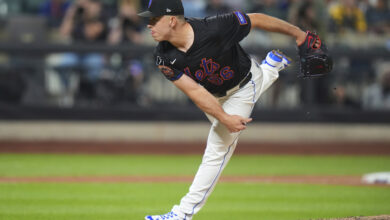
This Week in Cubs History: Giving New Meaning to ‘Two-Ball Count’
In this week’s edition of TWiCH, we look back at the infamous game that featured two balls in play at the same time.
On June 30, 1959 in a game between the Cubs and the Cardinals at Wrigley Field, an extra ball was put in play. It all started in the bottom of the 4th inning, with the Cardinals up 2-1 and Bob Anderson on the mound facing Stan Musial. The Man had worked a 3-1 count when the chaos began.
The next pitch Anderson delivered went to the backstop and Musial headed to first as if he had drawn a walk. Anderson and Cubs catcher Sammy Taylor began arguing with the home plate umpire that Musial had fouled the pitch (keep in mind that the original ball is still at the backstop).
Amid the confusion, Musial attempted to steal second and Cubs third baseman Al Dark retrieved the ball that was still behind home plate. Meanwhile the umpire, perhaps distracted by the heated argument, had inadvertently handed a new ball to Taylor. So Dark has a ball, Taylor has a ball, and Musial is trying to steal second.
Anderson sees the runner breaking, so the pitcher takes the ball from his catcher and fires to second. The throw sails over the base and into center field. Musial, seeing errant throw, took off for third. Meanwhile, Dark had likewise tried to throw Musical out, so Ernie Banks caught Dark’s ball (the original one) and tagged Musial out.
The play led to a lengthy delay in the game that surely would have triggered Rob Manfred’s pace-of-play fever. The umpires huddled together and eventually ruled Musial out since he was tagged by the original ball. The Cardinals then played the remainder of the game under protest, which was later dropped as the Cardinals went on to win the 4-1.

